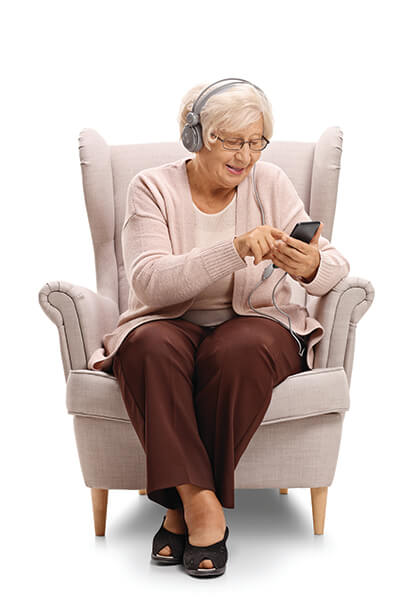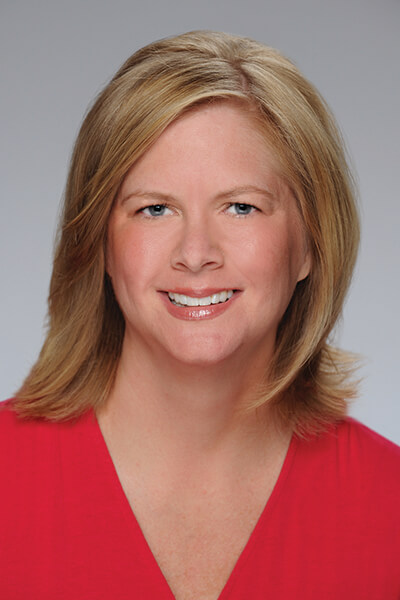Older generations welcome the health and wellness benefits of a comfortable, supportive new mattress, appreciate quality and have money to spend. These strategies can help you reach this desirable demographic

It is so tempting to chase the shiny new object. For mattress retailers, that’s been millennials and now Generation Z — the digital natives who are driving to e-commerce, boxed beds and other bedding trends. These young generations are at a time in their lives when they are forming preferences for brands and buying mattresses as they mark milestones like moving into a first apartment or getting married.
By contrast, marketing to baby boomers and the silent generation can seem so, well, yesterday. Millennials and Gen Zers are the future; older consumers are the past.
Wait. Not so fast.
Older consumers still can be a lucrative demographic for mattress retailers — and, more importantly, they need and appreciate the health and wellness benefits of a comfortable, supportive new mattress. It’s worth your time and resources to target messaging and sales tactics to these shoppers.
On the following pages, we’ll look at the needs of older baby boomers and members of the silent generation — and how you can best reach and serve them.
Follow the money
The U.S. economy continues to suffer as the novel coronavirus flares up across the country, and unemployment remains high (7.9% in September), putting a strain on budgets. But many older consumers have been relatively unscathed — economically speaking — aby the pandemic and are financially comfortable, especially those who have money in the stock market and who live off a combination of investments, pensions and Social Security.
Quality connoisseurs
Baby boomers shell out $548 billion a year, making them the biggest spenders by generation, according to a February 2019 report from Epsilon. Generation X follows, but spends considerably less, $357 billion annually, according to Epsilon, a marketing firm based in Irving, Texas.
So, older consumers are likely to have discretionary income. They also are likely to be dealing with the aches and pains, ailments and diseases that accumulate as we age. And that makes them appreciative of the health and wellness benefits of a new mattress. Think about it: If your senior lifestyle involves flitting from volunteer activity to volunteer activity or spending hours on a golf course or pickleball court each week, you need a restorative good night’s sleep as much as your younger counterparts. And, if you suffer from snoring (or you partner’s snoring), circulation problems, back aches or acid reflux, you’ll understand the benefits of an adjustable base.
The customers of Square Deal Mattress Factory skew older, says Richard Lash, chief executive officer of the manufacturer-retailer in Chico, California, which is featured in this issue’s Retail Road Trip. “They appreciate good health and comfort, and appreciate a good night’s sleep,” he says.
They also appreciate a good value and quality mattress. “For them, a bed isn’t just a commodity,” Lash says. And that means older consumers may be willing to pay more for a well-built mattress. In fact, 60% of older consumers say “quality” is the most important factor in choosing a brand, according to a July 2020 article from Suddenly Senior, a website aimed at seniors.
Myth busting
Before we go any further, let’s clear up a couple of myths about older consumers. First, they aren’t a monolith. Some remain in the workforce, either working full time or part time, while others are living active retirements filled with travel, volunteering, leisure activities, socializing and, of course, time spent with grandchildren. (See story on marketing to grandparents on page 14.) Others may be slowing down and spending more time at home.
“In the same way that every automobile isn’t a Ford, every member of the mature market isn’t a ‘senior,’ ” according to the Suddenly Senior article. “…Each segment (has) its own wants and needs. What’s more, each age segment can be defined further by income, health, discretionary time and more. …The point is, when it comes to the mature market, one size does not fit all.” You’ll want to define the customers you’re targeting. Some consider 50-plus a mature consumer. For our purposes in this article, we’re narrowing it to those 62 and older — the age at which many people can retire and begin to draw Social Security.
Another myth to dispel is that older consumers aren’t interested in trying new products or switching brands. This myth has some basis in fact: “There is some logic behind the strategy of targeting younger consumers. According to Forrester research, 55% and 54% of those (younger) than 31 and (ages) 31-39, respectively, say they ‘enjoy trying new brands or products.’ That number drops to 39% for those ages 54-63 and to 31% for the 64-74 set,” writes staff editor Jeff Beer in a May 2019 article for Fast Company.
Although older consumers may not enjoy trying new brands or products as much as younger consumers, that doesn’t mean they aren’t open to new things. Think of the grandparents who regularly FaceTime with their grandkids or the seniors who take up a new hobby in retirement. You just need to give them a reason to consider a new bedding technology or to make a first visit to your store.
Senior strategies
Let’s look at some effective strategies for marketing and selling to older consumers.
Use the right words. “When speaking to those over 65, it pays to avoid labels such as ‘old’ and ‘elderly,’ ” according to Suddenly Senior. “As one ad executive says, ‘The only label these people like is ‘grandparent.’ ” Karina Tama-Rutigliano agrees. “Our research and experience tell us that seniors in today’s society don’t want to be called ‘elderly,’ although they don’t mind being referred to as ‘older adults’ or ‘seniors,’ ” writes Tama-Rutigliano, founder and chief executive officer of Senior Care Clicks, in a November 2017 article for Forbes.
Build credibility. “If your company has been in business for 25 years, say so. If you’re new on the block, emphasize your commitment to customer service,” according to Suddenly Senior. Feature testimonials from older customers and back up product claims with research and testing results. In your brick-and-mortar locations, use component demonstrations, minibuns and videos to explain why a particular mattress is well-suited to a mature shopper. Avoid jargon during sales presentations and in online product descriptions.
Craft the message. Older consumers are drawn to products and services that will enhance their independence, allow them to be healthier and more fit, strengthen family relationships and help them enjoy life, Tama-Rutigliano says. Luckily for mattress retailers, bedding products naturally can help them meet several of those goals.
Offer a personal touch. Some older consumers may be uncomfortable with chatbots, automated phone trees and similar technologies. They want to talk to a person. On websites and in social media, prominently list phone numbers that will take customers directly to a person. In marketing messages, feature your company’s founders, top managers and key employees across channels and platforms. Remind older consumers that there are real people behind your brand and company — real people who want to help them get a better night’s sleep.
Create an image. “Image selection is a very important factor when marketing to seniors,” Tama-Rutigliano says. “My rule of thumb is that most people see themselves about 10-15 years younger than they are.” For marketing materials, ads, social media and websites, choose aspirational images of older consumers that “connect to the image of a person they believe could be them,” she suggests.
Be a sight for sore eyes. As a practical matter, senior shoppers may have diminished vision and appreciate well-designed, easy-to-read printed materials, whether those are ads, product signage or mattress care instructions. “Set type in a readable size … and use plenty of white space, bold headlines and subheads to make copy a pleasure, rather than a chore, to read,” Suddenly Senior recommends. In all media, shorter blocks of copy are better than long.
Make websites work for them. Older consumers prefer easy-to-navigate websites that directly answer their questions, Tama-Rutigliano says. A good “website gives them tidy boxes with short descriptions that hold links to additional, detailed webpages providing them with more information,” she adds. Use clear, logical language to label pages and links. And, as with print materials, keep fonts larger and easy to read. (Honestly, consumers of any age will benefit from these best practices.)
Keep some things unspoken. For the eldest consumers, their next mattress purchase may, in fact, be their last. It’s certainly not a subject you’d want to bring up to shoppers, but it is something to keep in mind. You can address it by steering these consumers to mattresses made with high-quality components or featuring heavy-duty constructions, and beds with longer warranties (say 10 or 15 years).
Keep in mind that age is just a number. Consider reaching senior shoppers by focusing on their attitudes, not by thinking about their chronological age. “Perhaps focusing on age groups is the wrong approach altogether. The 2018 McCann study, ‘Truth About Age,’ found that aging is something everyone thinks about. Its data showed that people in their 20s fear death the most (and) those in their 30s think about aging the most, while people in their 70s actually worry about aging the least. The report suggested marketers should shift from age to attitudinal segmentation,” Beer writes. For instance, you could weave images of active seniors into messaging to consumers of all ages who want a good night’s sleep that revs them up for the day ahead.
Finally, remember that what older consumers seek is not that different from what younger consumers desire: As Tama-Rutigliano says, “Seniors want information that is clear, honest and concise and (that) makes them feel valued as people.”
Talkin’ ’Bout My Generation
In these articles, we’re talking mostly about consumers in the silent generation and older baby boomers, but you may choose to microtarget other segments of mature shoppers.
The Greatest Generation (or GI Generation)
Born 1927 or earlier
Ages 93 and older
The Silent Generation
Born 1928-1945
Ages 75-92
Baby Boomers
Born 1946-1964
Ages 56-74
Generation X
Born 1965-1980
Ages 40-55
Millennials
Born 1981-1996
Ages 24-39
Generation Z
Born 1997-2012
Ages 8-23
Source: Pew Research Center, 2019
Seniors Are Tech Savvy, Too

We think of millennials and Generation Z as tethered to their tech devices. They are the digital natives, after all. But older generations use technology at rates higher than you might expect.
According to the Washington, D.C.-based Pew Research Center, baby boomers use many aspects of technology at levels similar to those of younger generations. However, the silent generation does lag behind. This means that younger seniors may be as comfortable shopping online as in-store, but the eldest seniors may prefer visits to brick-and-mortar locations or using services like over-the-phone ordering.
“Previous Pew Research Center surveys have found that the oldest adults face some unique barriers to adopting new technologies — from a lack of confidence in using new technologies to physical challenges manipulating various devices,” writes Emily A. Vogels in a September 2019 Pew article.
Here are some other findings from Pew about tech use among older generations:
- Internet: About 85% of boomers and 62% of silents use the internet. (For comparison, nearly 100% of millennials use the internet.) A relatively small percentage of older generations access the internet primarily via smartphone: 11% of boomers and 15% of silents.
- Smartphones: Nearly seven in 10 boomers own a smartphone, but only four in 10 silents do.
- Tablets: “Tablet ownership is now comparable across most generations,” Vogels writes. More than half of baby boomers have a tablet, similar to levels among Generation Xers and millennials. A little more than a third of silents own a tablet.
- Broadband: Access to in-home broadband also is similar among millennials, Gen Xers and baby boomers: Roughly three-quarters of all three generations have broadband service in their homes. However, only 45% of silents report having such access.
It’s important to consider seniors’ comfort level with technology and their usage habits when targeting. For instance, given their lower levels of tech usage, silents may benefit from advertising messages delivered through traditional marketing methods, such as TV and radio spots, direct mail, newspaper and magazine ads, and billboards.
Go After the Grandparents

Showering grandchildren with gifts is one of the perks of being a grandparent, right up there with sending the grandkids back home to their parents after a nice visit.
Grandparents are free with their money, spending $179 billion a year on their grandchildren, according to the AARP Grandparenting Study released in 2019. That $179 billion breaks down to about $2,562 doled out per grandparent — money spent on everything from grandchildren’s education to holiday gifts to day-to-day expenses.
This makes grandparents an ideal segment for mattress retailers to reach with tailored marketing and advertising messages. And it’s a growing consumer segment. According to AARP, the number of grandparents in the United States has grown 24% in the past two decades, from 56 million in 2001 to 70 million in 2019. By age 65, 96% of Americans are grandparents, according to the study.
“For most grandparents, gift giving is part of the fun of the role: Eighty-six percent of grandparents say they buy their grandchildren gifts, spending an annual average of $805 on gifts alone,” the study says. “Grandparents also foot the bill for other expenses, such as vacations, entertainment and investments.”
Here are some ways to target grandparents:
- Remind grandparents how important a good night’s sleep is to children’s health and development. (The Better Sleep Council, the consumer education arm of the International Sleep Products Association, has good information about children’s sleep needs at BetterSleep.org/Better-Sleep/Children-and-Sleep.)
- Suggest upgrading guest room beds to provide comfortable, supportive sleep for grandchildren’s growing bodies.
- Promote the easy purchasing and shipping — and relatively low cost — of boxed beds that can be sent to grandchildren who live in other parts of the country.
- Market pillows, weighted blankets and other sleep accessories as thoughtful, practical holiday gifts, especially for older grandchildren who are in college or who are setting up their first homes.
Quick Tips for Boosting Sales to Seniors

- If you sell two-sided mattresses, offer a flipping/turning service, either for free or for a nominal fee. Older consumers, in particular, appreciate not having to lift heavy beds. Let customers choose a schedule that suits them: monthly, quarterly, twice a year or as needed, and use your delivery team to make the service calls.
- Some seniors split their time, living in northern climes in the warmer months and traveling south for winters. That can mean two houses — and twice the need for new beds. Encourage these shoppers to upgrade mattresses in both homes. If you don’t have a location in both locales, offer to ship.
- Many older consumers appreciate the benefits of voice assistants like Amazon Alexa and Google Home — and may be interested in the higher-end adjustable bases that can be operated using such technology. Be sure to point out those benefits online and during in-store demonstrations.
Yes, Millennials Also Matter
No successful retailer can neglect one generation of shoppers while chasing another. To hone your strategy for reaching and attracting millennials and younger consumers, check out findings regarding their bedding shopping habits and preferences from the latest Better Sleep Council research. Read “Millennials: Your Time Has Come” in the September issue of Sleep Savvy.

Julie A. Palm is chief wordsmith at Palm Ink LLC in Winston-Salem, North Carolina. She has 25 years of experience as a writer and editor for newspapers and magazines and as a publications director. She is a past editor in chief of both Sleep Savvy and BedTimes magazines. She can be reached at japalm623@gmail.com.

